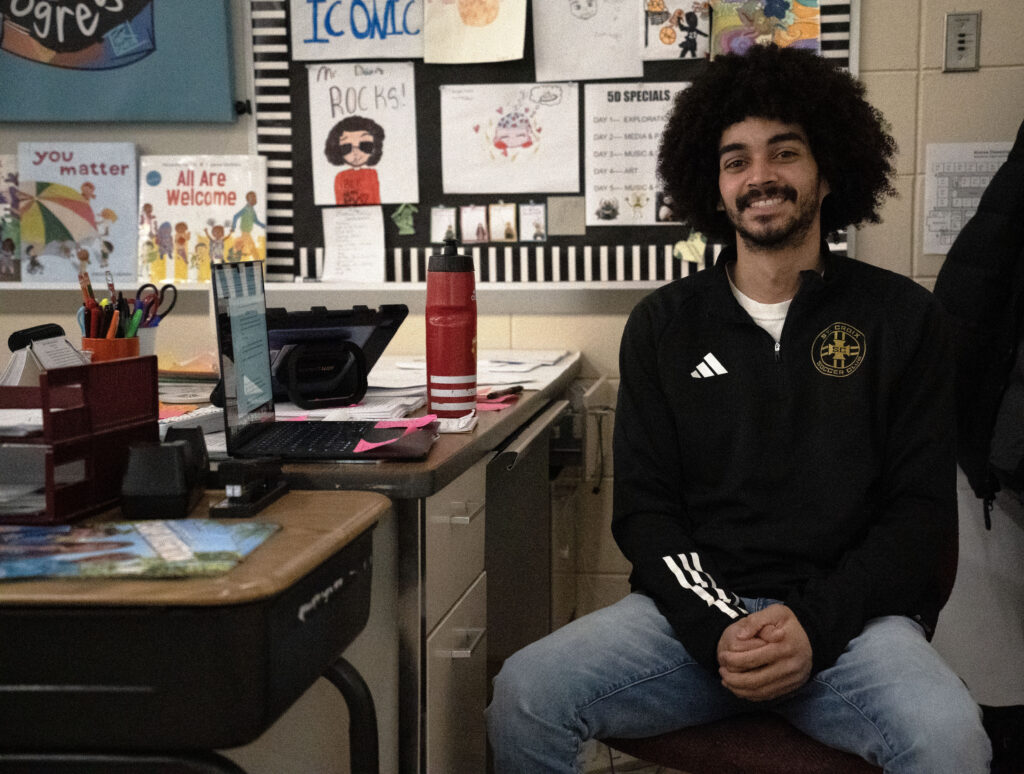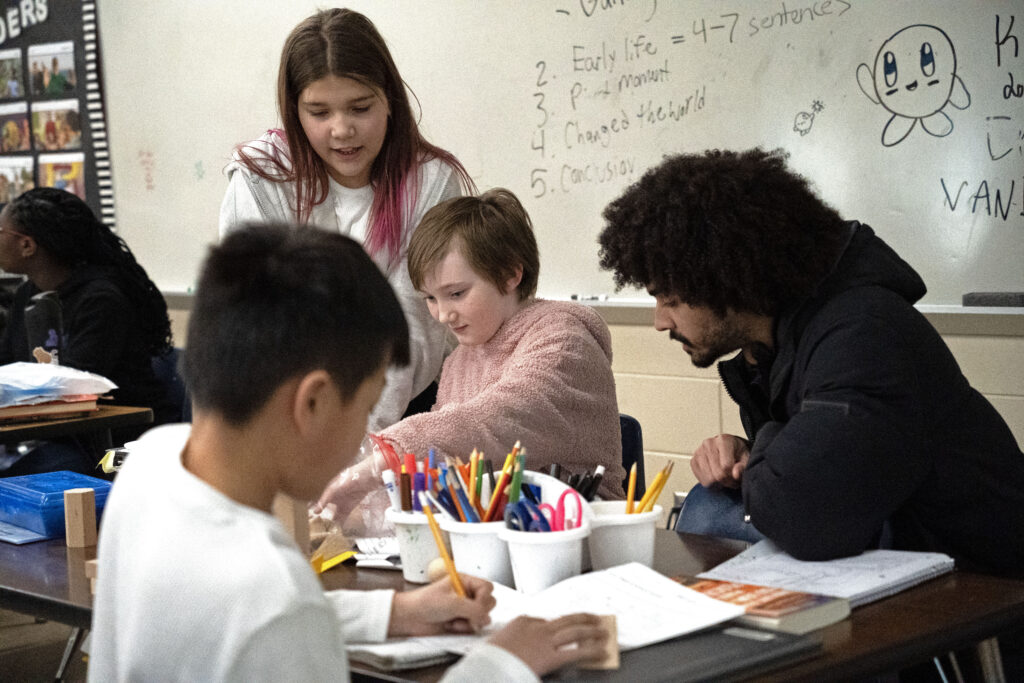By: Ryann Frolik
It didn’t take long for Dominick Davis to realize once he started his teaching career that students often are treated differently based on stereotypes.
“I noticed the treatment of kids was different, depending on what they looked like, and how they sound or act,” said Davis, a fifth-grade teacher at Monroe Elementary School in Coon Rapids, Minnesota. “For me, every day is a new day. I don’t care what a student did last year. This year, with me, we’re going to figure it out so I can help them reach as far as they want to go.”
Davis, a Black man, is a rarity in public education in Minnesota.

Currently, Black male teachers make up only 0.5% of the teaching workforce in Minnesota, a disparity that often reinforces educational inequities and creates a lack of representation for Black students. This gap is especially felt in classrooms where young Black boys may never have the opportunity to experience an academic environment where equality and diverse perspectives are prioritized, enriching the overall educational experience for all students.
Black Men Teach, or BMT, is trying to change that. Established in 2017, Black Men Teach was created to address the significant gap in Black male educators, particularly in Minnesota. Based in St. Paul, the organization provides vital resources, including support for placing and preparing Black male educators in elementary schools across the Twin Cities Metro area.
Davis is passionate about understanding students and offering a sense of community to those who may not receive as much love and care at home. In its early years, BMT set a goal of achieving 20 percent Black male teacher representation in the eight schools they partnered with. As of now, the organization is working to build a coalition aimed at expanding to every elementary school in Minnesota where, according to the Minnesota Department of Education, nearly 37% of the student population identifies as BIPOC in K-12 schools.

Black Men Teach offers financial support to reduce barriers for prospective Black educators, including paid internships and up to $20,000 in scholarship support. It also has partnered with Habitat for Humanity to offer personalized aid for first-time home buyers who are in BMT However, its efforts go beyond financial assistance and include community and emotional support. The organization is dedicated to fostering engagement and creating opportunities for all students. It seeks to recruit high school junior and senior boys interested in pursuing careers in education. Prospective teachers are offered hands-on experiences that provide real-world exposure in the classroom, including 1:1 instructional coaches. Students develop their skills through creating lesson plans, shadowing experienced educators and receiving guidance to help them refine effective teaching strategies.
Ja’Von Coleman, a student at Concordia University in St. Paul, is a current member of the BMT mentorship program who works with second-grade teacher Chris Hosey at Monroe Elementary. BMT has opened doors in ways he never thought possible, Coleman said. BMT has provided an opportunity to attend a Black male education conference in Philadelphia, as well as monthly meetings with fellow college students, which helps encourage prospective Black male teachers. “It’s been a brotherhood,” Coleman said. “I feel I’ve been taken care of more than anything else.”
These efforts foster a network that allows teachers to lean on one other, which in turn enhances both teaching and learning. Black Men Teach creates a continuous cycle of support, reinforcing the understanding that when educators are empowered and supported, they are better equipped to provide that same support to their students.